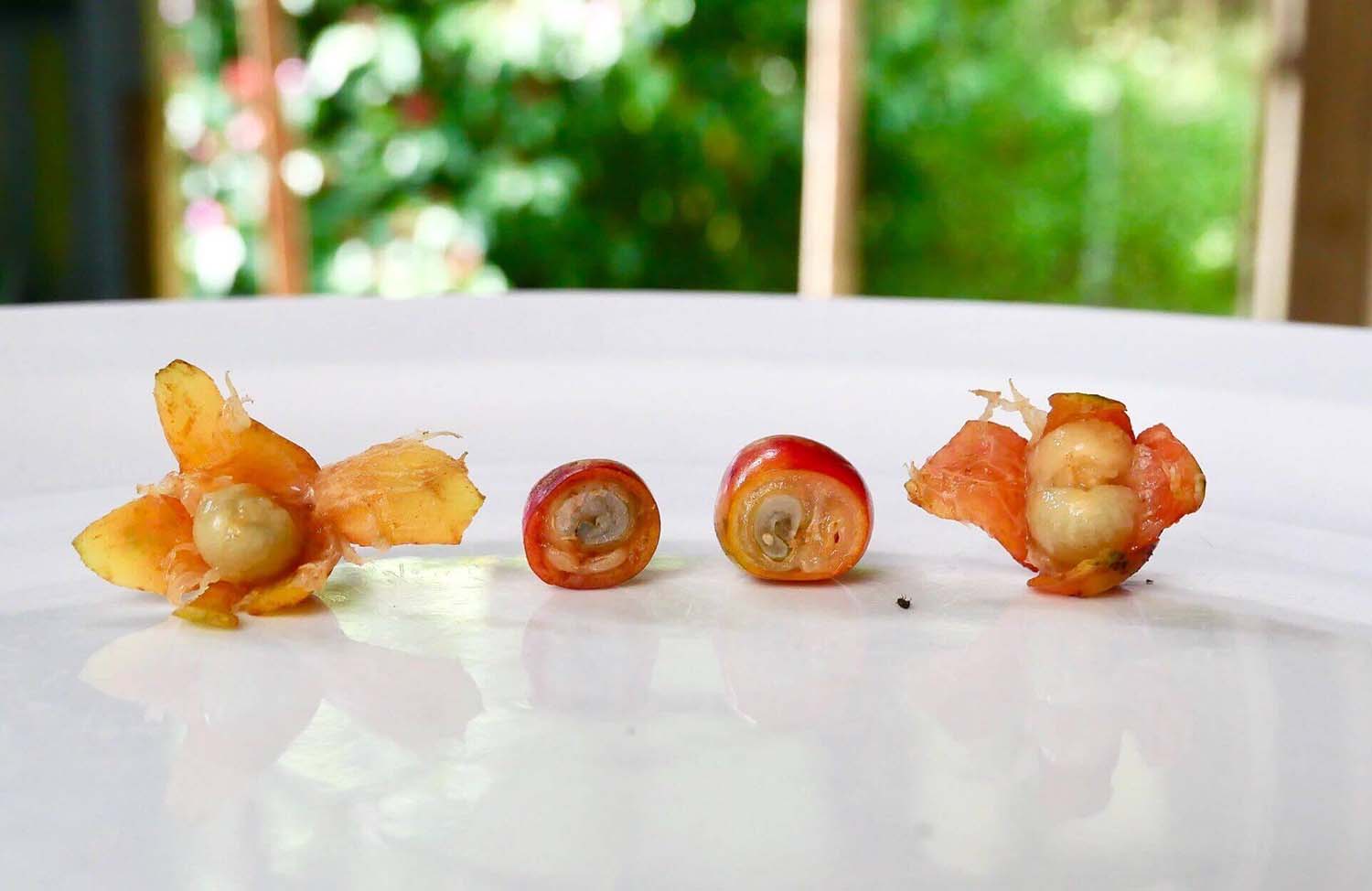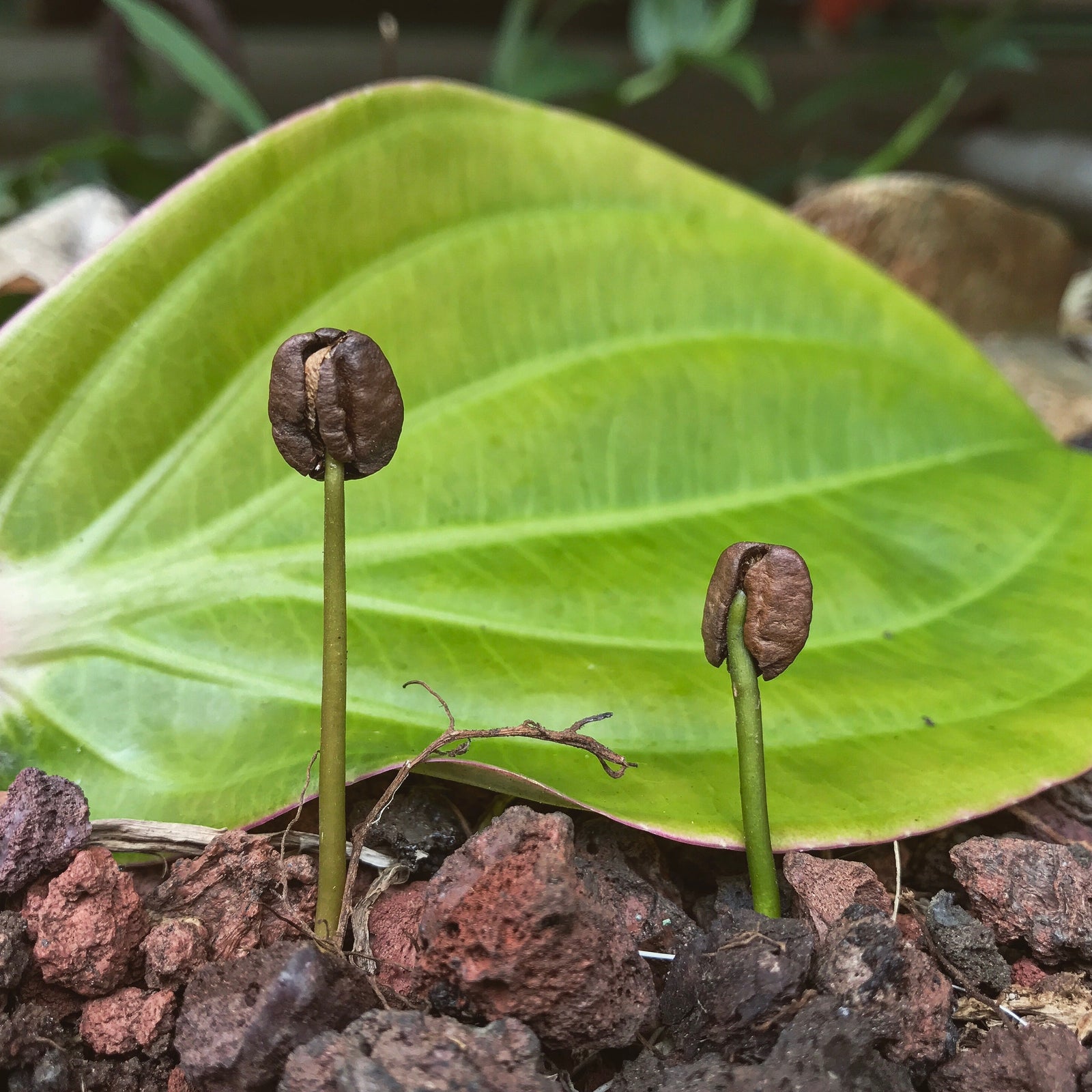Hawaiian coffee is unique and delicious, with growing regions across the Big Island that offer a range of flavor profiles. However, of the various coffees grown here in Hawaii, two often stand apart from the rest: Ka’u and Kona.
Ka’u and Kona coffee are grown in specific areas of the Big Island, where they benefit from a unique terroir, nutrient-rich volcanic soil, and a tropical climate. Altogether, this creates unique flavors that are prized by coffee drinkers around the world.
Let’s take a closer look at these coffees and what makes them so special, as well as how they differ from one another.

What is Kona coffee?
Kona coffee is an extremely rare coffee grown in what’s known as the Kona coffee “belt”. This growing region comprises approximately 800 farms, but is only 30 miles long and a mile wide.
The most commonly grown variety in the Kona region is Typica, which thrives here thanks to the unique growing conditions. Beyond Typica, other varieties are also grown, including a mutation of the variety known as Pache and the ever-popular Caturra.
Kona is prized for its rarity, quality, and complexity. This is why it is one of the most expensive coffees in the world.
What is Ka'u coffee?
While not as well-known as Kona coffee, Ka’u coffee is similarly delicious. Ka’u coffee is grown on the southern slopes of the Mauna Loa volcano, 20 miles south of the neighboring Kona Coffee Belt.
The Ka’u growing region spans approximately 600 acres of farmland, and there are three main areas in that region: Cloud’s Rest, Pear Tree, and Wood Valley.
However, Ka’u coffee has only been grown for about 30 years, as this region was historically home to sugarcane farms. In late 1990s, these were shut down, and the land was replanted with coffee trees.
Ka’u coffee farmers now grow a wide range of varieties, including Caturra, Maragogipe, Yellow Bourbon, and Pacamara.

How do the conditions in Ka’u and Kona vary?
These coffees are grown on two different parts of the Big Island, which means differences in their climate, landscape, terroir, and flavor.
Kona Growing Conditions
Kona coffee grows in the highlands of Hualalai and Mauna Loa. The higher elevations of these areas allow for a much cooler environment than the coastal areas, which means the coffee cherries mature much more slowly. This extended development time results in a denser, more complex bean.
The hilly landscape in Kona also receives plentiful rainfall and lots of shade from the tree cover and the rain clouds themselves. Furthermore, the gradient of these hills allows the rain to nourish the coffee plants without pooling or flowing downhill too quickly.
The terrain of these hills is very rocky and uneven, making harvesting more difficult. However, the effort is worthwhile, if only for the fact that these hills are packed with nutrient-rich volcanic soil. This ensures optimal nutrient absorption through the coffee plants’ roots, nourishing the cherries and creating delicious Kona coffee.
Ka'u Growing Conditions
The growing conditions in Ka’u aren’t actually too dissimilar from those in Kona. Most farms are located at altitudes of between 1,000 and 2,500 feet above sea level. The weather conditions are similar to the west side of Mauna Loa, where there is a balance of hot sunny mornings and cool, cloudy afternoons with light rainfall.
At night, the cold mountain air flows off Mauna Loa and towards the coast, cooling down Ka’u coffee farms along the way. This cool airflow lowers temperatures at night, giving coffee plants more time to develop.
Like Kona, the Ka’u region also boasts high-quality, nutrient-rich soil. Soil in Ka’u is packed with volcanic ash deposits from the nearby Kilauea volcano. The soil is acidic and has good drainage, which is ideal for coffee plants. Much like the soil in Kona, it’s also filled with nutrients that are perfect for optimal plant growth.

How Much Does Kona Coffee Cost?
Kona coffee is one of the most high-quality coffees in the world, and as such it commands some of the highest prices in the coffee industry.
There are a variety of reasons for this, all revolving around the rarity and uniqueness of the coffee. These are:
- Kona coffee is hand-harvested. This accounts for up to 40% of the cost of each bag.
- Everyone in the supply chain earns a living wage that exceeds Fair Trade standards.
- Kona coffee is rare, causing some supply and demand issues.
- There’s not much agricultural land available in Kona, so the price of production tends to be high.
How Much Does Ka'u Coffee Cost?
On average, Kona coffee usually sells for $40 to $50 per bag, whereas Ka’u coffees tend to cost less, retailing at around $25 to $35 per bag.
Ka’u coffee is also comparatively newer and less popular than Kona coffee, which comes from a growing region that is already well-known.

How Does Kona Coffee Taste?
Kona coffee is generally smooth, sweet, well-balanced, and creamy, with notes of chocolate, cocoa butter, nuts, and spices. As such, it makes a fantastic option for those who enjoy filter coffee without milk.
At Big Island Coffee Roasters, we usually offer three to four Kona coffees at once. Kona Peaberry is popular with those who enjoy medium roast coffees, as it is deeply sweet and rich, with notes of cinnamon, caramel, plum, and hints of cacao and cedar. For dark roast coffee lovers, we recommend our 100% Kona coffee dark roast, Kona Moon.
How Does Ka'u Coffee Taste?
Meanwhile, Ka’u coffees are rich and full-bodied, with mild acidity and a smooth aftertaste. Some common tasting notes include caramel, cinnamon, as well as pecan and other nutty flavors.
In dark roast Ka’u coffees, you can expect the acidity to turn into spicy notes, along with flavors of pine and spruce. We recommend these for those who prefer robust and intense flavors in the cup.
Our most popular Ka’u coffees – Ka'u Yellow Bourbon and Ka'u Maragogipe – are fruity, deep, and intense. The Yellow Bourbon has notes of pineapple, rose, and grape, while the Maragogipe is floral and sweetly savory.
Ka’u and Kona coffee are two of the best Hawaiian coffees that money can buy, with complex flavors, delicious cup profiles, and exceptional quality. Their growing regions are totally unique, with nutrient-rich volcanic soil and characteristics unlike anywhere else in the world.
If you’re eager to get your hands on some, you can start by checking out our online store. We offer a number of 100% Hawaiian coffees, including complex single origins and delicious blends.




